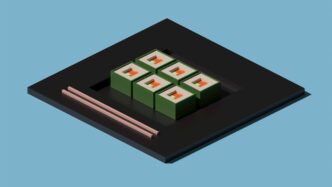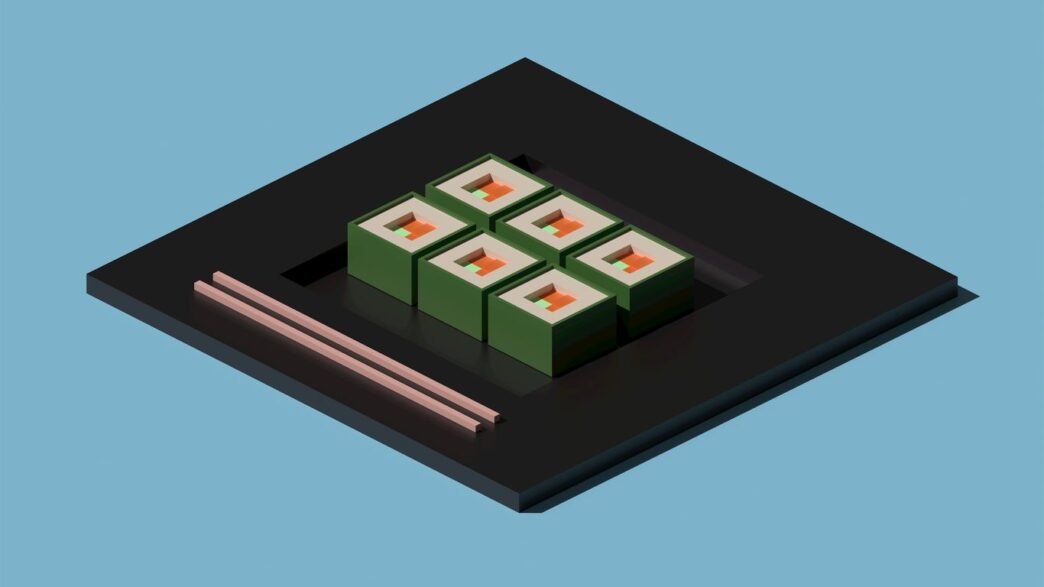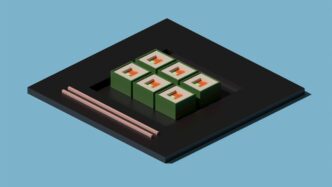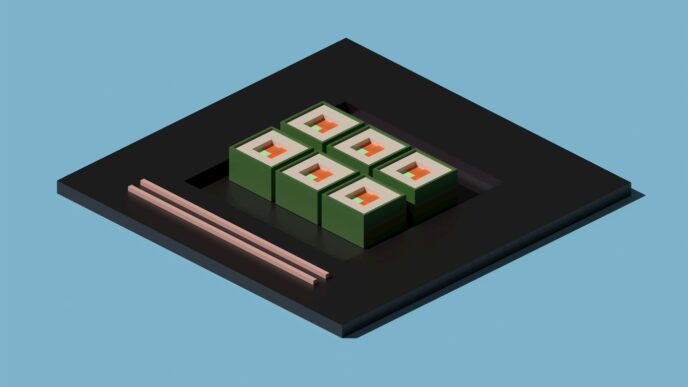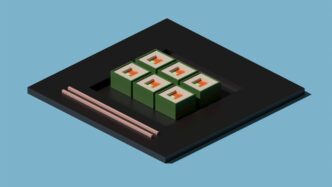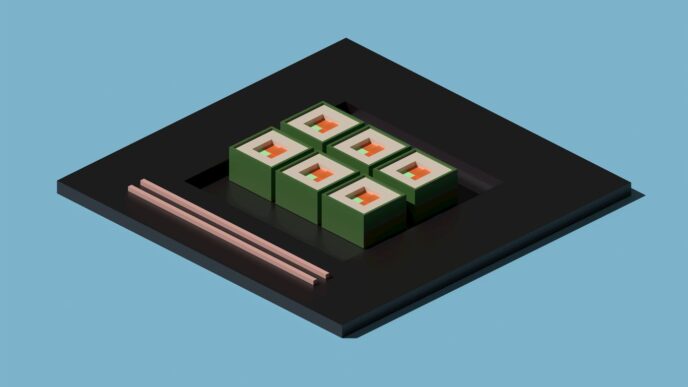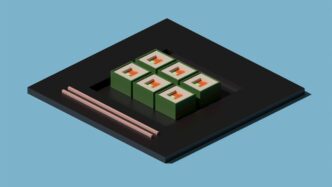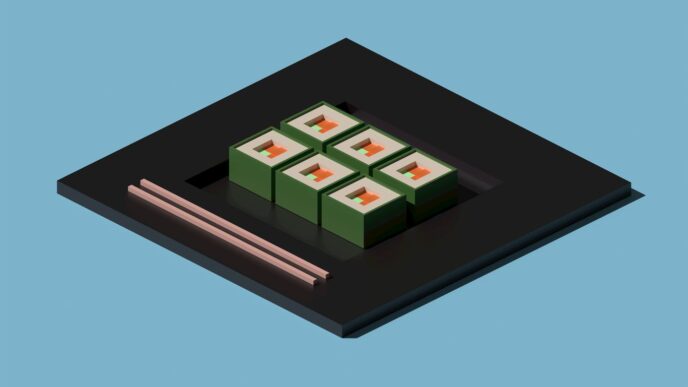So, you’ve probably heard about quantum computers, right? They sound super futuristic, like something out of a sci-fi movie. But some of them are actually here, and one of the main players is the D-Wave quantum computer. It’s not quite like the ones you see in the movies, as it uses a different method called quantum annealing. This article is going to break down what that means, how it works, and what this D-Wave quantum computer can actually do. We’ll look at how it stacks up against regular computers and where it’s being used today. Plus, we’ll touch on the tech behind it and what the future might hold.
Key Takeaways
- D-Wave’s quantum computers use a method called quantum annealing, which is different from the gate-model approach used by some other quantum computers. This makes it good for solving certain kinds of hard problems, especially optimization ones.
- When tested on tough problems, the D-Wave quantum computer has shown it can be much faster than regular computers. This speed advantage is noticeable in tasks like finding the best solution among many options or figuring out probabilities.
- The D-Wave Advantage2 system, a newer version, shows even better performance. It can solve problems faster and sometimes find better solutions than older D-Wave machines, thanks to improvements in its design.
- D-Wave’s technology is already being used for real-world tasks. This includes solving complicated planning problems, understanding how quantum systems behave, and even helping with analyzing complex data patterns.
- Building these machines involves specific architectural choices, like the ‘Zephyr’ network of qubits. Researchers are also working on making qubits more stable and reducing errors, which are big challenges in making quantum computers work better.
Understanding D-Wave’s Quantum Annealing Approach
So, D-Wave’s whole deal is quantum annealing. It’s not quite like the gate-model quantum computers you might hear about, which are more about building up computations step-by-step. Instead, D-Wave’s approach is geared towards solving specific kinds of problems, particularly optimization ones. Think of it like finding the lowest point in a really bumpy landscape. Quantum annealing tries to use quantum mechanics to get to that lowest point faster than just rolling a ball down the hill classically.
To get a problem ready for a D-Wave quantum processing unit (QPU), you usually have to frame it in a specific way. This often involves translating your problem into what’s called an Ising model or a Quadratic Unconstrained Binary Optimization (QUBO) problem. These are mathematical ways of describing problems where you’re trying to find the best combination of binary variables (think 0s and 1s) that minimizes or maximizes a certain objective function. It’s like setting up a puzzle where each piece has a value, and you want to arrange them to get the best overall score.
- Ising Model: This uses spin variables, which can be +1 or -1. The goal is to find the spin configuration that minimizes the system’s energy.
- QUBO: This uses binary variables, which are 0 or 1. It’s very similar to the Ising model, just with a different variable representation.
Getting your problem into one of these formats can be a bit of work, and sometimes you need clever algorithms to map complex problems onto the hardware’s specific structure. This is where a lot of the practical work happens when using these machines.
Once you have your problem in the right format (Ising or QUBO), it needs to be ‘compiled’ for the D-Wave QPU. This means translating your problem’s mathematical representation into the specific connections and biases that the QPU’s qubits can understand. The QPU has a fixed hardware topology, meaning qubits are only directly connected to a few neighbors. If your problem requires connections between qubits that aren’t directly linked on the chip, you have to break that problem down and represent it using multiple connected qubits. This process is called minor embedding. It’s a bit like trying to draw a complex diagram on a grid where you can only draw lines between adjacent squares – you have to get creative.
- Minor Embedding: This is the process of mapping your logical qubits (from your problem) onto the physical qubits of the QPU, especially when direct connections aren’t available.
- Problem Size: The number of qubits and the connectivity of your problem directly impact how well it can be mapped and solved.
- Hardware Graph: Understanding the specific layout of qubits and their connections on the D-Wave chip is key to efficient compilation.
It’s important to distinguish D-Wave’s quantum annealing from the gate-model quantum computers. Gate-model computers are more general-purpose. They use quantum gates, similar to logic gates in classical computers, to perform operations. These are the machines often talked about for tasks like factoring large numbers or simulating complex molecules in a very precise way. D-Wave’s quantum annealers, on the other hand, are specialized for optimization and sampling problems. They are designed to find the lowest energy state of a system, which corresponds to the optimal solution of the problem you’ve mapped onto it. While gate-model computers are still largely in the research phase for many applications, D-Wave’s annealers have been available for longer and are used for specific types of real-world problems. You can find out more about quantum annealing and its potential.
Performance Benchmarks of the D-Wave Quantum Computer
So, how well does this D-Wave quantum computer actually perform? It’s a big question, and the answer is pretty interesting. We’re not just talking about theoretical possibilities here; there have been real tests done to see how it stacks up.
Outperforming Classical Solvers on Complex Problems
When you throw really tough problems at the D-Wave machine, especially those that are tricky for regular computers, it can pull ahead. Think of problems with lots of ups and downs in their solutions, like finding the best way to route delivery trucks through a city with tons of traffic. For these kinds of challenges, D-Wave’s quantum processing units (QPUs) have shown they can find answers much faster than even specialized software running on powerful classical hardware. It’s not always a massive leap, but in some cases, the speed difference is huge – like three to four times faster, just looking at the time it takes to actually do the calculation. This is a big deal for fields that rely on solving these kinds of complex puzzles.
Speed Advantages in Optimization and Sampling
Optimization is all about finding the best possible solution out of many options, and sampling is about understanding the probabilities of different outcomes. D-Wave’s approach, quantum annealing, is particularly good at these tasks. Researchers have created specific types of problems, like those involving frustrated cluster loops, where classical methods really struggle. On these, the D-Wave 2000Q system has demonstrated it can outperform standard classical tricks. While it’s not a magic bullet that solves everything instantly, it’s a step towards showing where quantum computers can offer a real speed boost. This is important for things like materials science and drug discovery, where finding optimal configurations is key.
Performance Gains in the D-Wave Advantage2 System
The latest hardware, like the Advantage2 system, is showing even more promise. This newer machine has more qubits and a different way of connecting them, called the Zephyr topology. When tested on difficult problems, like 3D-lattice spin glasses, the Advantage2 system has produced better quality answers. What’s really exciting is that it can do this much, much faster than older D-Wave systems. We’re talking about anneal times that are orders of magnitude quicker in some scenarios. This kind of improvement means that more complex problems, which were previously out of reach, might now be solvable. It’s a clear sign that the technology is moving forward, and it’s making D-Wave a company to watch in the computer hardware stocks space.
Applications and Real-World Impact of D-Wave Technology
It’s pretty wild to think about how far we’ve come with computers, and now, quantum computing is actually starting to do some really neat things in the real world. D-Wave’s approach, focusing on quantum annealing, has been particularly good at tackling some seriously tough problems that used to take forever, or were just impossible, for regular computers. This technology is already being used to solve practical challenges across different industries.
Solving Complex Optimization Problems
Think about problems where you have a ton of options and you need to find the absolute best one. That’s optimization. D-Wave’s systems are really good at this. For example, companies are using them to figure out the most efficient way to route delivery trucks, which saves a lot of time and gas money. It can also help in financial modeling, like finding the best mix of investments to get the most return with the least risk. They’ve even used it to help optimize the placement of cell towers to get the best signal coverage.
Here’s a quick look at some areas where optimization is a big deal:
- Logistics and Supply Chain: Finding the shortest routes, managing inventory, and scheduling deliveries.
- Financial Services: Portfolio optimization, fraud detection, and risk management.
- Manufacturing: Production scheduling, resource allocation, and factory layout.
- Drug Discovery: Identifying promising molecular structures and optimizing chemical reactions.
Estimating Quantum Boltzmann Statistics
This one’s a bit more technical, but basically, it’s about understanding complex probability distributions. D-Wave’s quantum computers can help scientists estimate these distributions, which is super useful in fields like machine learning and statistical physics. It’s like getting a better handle on how systems behave when there are a lot of random factors involved. This can lead to better AI models and a deeper understanding of physical phenomena. It’s a way to get insights into systems that are too complicated for classical computers to model accurately.
Applications in Topological Data Analysis
Topological Data Analysis, or TDA, is a way to look at the shape and structure of data. Imagine trying to understand the shape of a cloud of points – TDA helps with that. D-Wave’s quantum computers can speed up some of the calculations involved in TDA. This is important for finding patterns in large, complex datasets that might be hidden otherwise. Think about analyzing complex biological networks or understanding the structure of materials. It’s about finding the underlying structure in messy data, and quantum computers can help uncover those hidden connections. This is a growing area, and we’re seeing more and more research into how quantum computing can help us make sense of vast amounts of information. You can find out more about how D-Wave is being used in the real world by looking at D-Wave Quantum (QBTS) stock.
Investigating Quantum Behavior in D-Wave Processors
So, does the D-Wave machine actually do quantum stuff, or is it just a fancy classical computer in disguise? That’s the big question researchers have been wrestling with. It’s not as simple as just looking at the output; you have to dig a bit deeper.
Distinguishing Classical and Quantum Models
Figuring out if a D-Wave processor is truly quantum or just a really good classical simulator is a tricky business. Scientists have been using clever experiments to try and tell the difference. One way they do this is by setting up specific problems, like a type of model called a transverse Ising model, and then seeing how the D-Wave machine handles it. They look at how the energy levels behave, especially when you have groups of qubits working together. The distribution of these energy states can act as a sensitive probe, helping to rule out purely classical explanations. It’s like trying to identify a specific fingerprint – if the D-Wave’s behavior matches what quantum mechanics predicts and doesn’t match classical physics, that’s a strong clue.
Evidence for Open System Quantum Dynamics
Even when these processors aren’t perfectly isolated – meaning they’re interacting with their environment a bit (which is called an ‘open system’) – they still seem to show quantum behavior. Researchers have found evidence that the system follows quantum dynamics, even with some thermal noise and when the qubits aren’t perfectly stable during the annealing process. This suggests that the quantum effects are robust enough to show up even when things aren’t ideal. It’s pretty neat that the quantum nature persists despite these real-world imperfections.
Probing Noise in D-Wave Fabrication Stacks
Building these quantum processors is incredibly complex, and like any intricate piece of technology, there’s noise involved. This noise can come from various parts of the fabrication process. Scientists are actively studying this noise, looking at different types like mid-band and broad-band noise. Understanding these noise sources is important because they can affect the processor’s performance and how reliably it performs quantum computations. It’s a bit like trying to tune a sensitive instrument – you need to account for all the little disturbances to get the best sound, or in this case, the best quantum computation.
The D-Wave Ecosystem and Future Outlook
D-Wave has carved out a unique spot in the quantum computing world, mostly by focusing on quantum annealing. It’s not just about the hardware, though. They’ve built up a whole system around it, including cloud services and tools to help people actually use their quantum computers. Think of it like this: they’re not just selling a fancy engine; they’re also providing the blueprints, the mechanics, and the roads to drive on. This approach has helped them get a bunch of customers across different industries, from finance to manufacturing, who are using D-Wave’s tech to tackle some really tough problems.
D-Wave’s Role in the Quantum Computing Landscape
Right now, D-Wave is seen as a pioneer, especially in the quantum annealing space. They were one of the first companies to really push this technology out there. While other big players are often focused on gate-model quantum computers, which are good for a wider range of problems, D-Wave has stuck to its guns with annealing. This specialization means they’re really good at certain types of problems, particularly optimization. It’s like having a specialist doctor – they might not do everything, but they’re the best at what they do. This focus has allowed them to build a customer base that needs exactly what they offer.
Navigating Competition and Technological Advancements
It’s not all smooth sailing, though. The quantum computing field is getting crowded, and fast. Companies like IBM and Google are making big strides with their gate-model computers, which could eventually do more things than D-Wave’s annealers. Plus, regular, classical computers are getting better all the time, which means D-Wave has to keep proving that their quantum approach is actually faster or better for certain tasks. It’s a constant race to stay ahead. They’ve got to keep innovating and showing people why their specific type of quantum computing is still the way to go, even as other technologies catch up or surpass them in different areas.
The Enterprise Value and Opportunities of Quantum Computing
So, what’s the big picture here? The market for quantum computing is expected to grow a lot in the next few years. D-Wave is in a good position to grab a piece of that growth because they’ve been doing this for a while and have real-world examples of their tech working. They’ve got systems that can handle a million variables, which is pretty impressive for tackling complex business problems. For example, they’ve worked with companies to optimize delivery routes, which can save a lot of money and reduce emissions. The potential for businesses to use quantum computing to get ahead is huge, and D-Wave is one of the companies leading the charge in making that happen, especially for companies that need to solve optimization puzzles.
Architectural Considerations for D-Wave Quantum Hardware
When we talk about D-Wave’s quantum computers, we’re really talking about specialized machines built for a specific type of quantum computation: quantum annealing. This means the hardware design has to be just right for that job. It’s not like building a general-purpose computer; these are finely tuned instruments.
The Zephyr Topology in D-Wave Systems
D-Wave processors use a specific way of connecting their qubits, called a topology. The latest ones, like those in the Advantage systems, use something called the Zephyr topology. Think of it like a road map for how qubits can talk to each other. This new map is more complex than older ones, allowing for more connections between qubits. This is a big deal because it means more intricate problems can be mapped directly onto the hardware without needing to break them down into smaller pieces as much. More connections generally mean a better ability to represent complex relationships in the problems we want to solve.
Challenges in Qubit Stability and Error Rates
Building and running quantum computers is tough. Qubits, the basic units of quantum information, are super sensitive. They can lose their quantum state easily due to noise from the environment or even from the manufacturing process itself. This is often called decoherence. D-Wave’s processors, being superconducting, operate at extremely cold temperatures to minimize this. However, keeping thousands of qubits stable and minimizing errors is a constant engineering challenge. The goal is always to make qubits more robust and reduce the rate at which errors creep in, which directly impacts the reliability of the results.
Designing Superconducting Quantum Annealing Processors
Designing these processors involves a lot of careful engineering. It’s about figuring out how to fabricate thousands of qubits on a chip, connect them in the desired topology, and ensure they can be controlled precisely. This includes:
- Material Science: Choosing the right materials for superconducting circuits that are stable and perform well at low temperatures.
- Fabrication Techniques: Developing advanced manufacturing processes to create these intricate, tiny components with high precision.
- Control Systems: Building sophisticated electronics to send the precise microwave pulses needed to initialize, manipulate, and read out the state of the qubits.
The interplay between these factors is what ultimately determines the performance and capability of the D-Wave quantum annealing hardware. It’s a continuous cycle of design, fabrication, testing, and refinement to push the boundaries of what these machines can do.
Wrapping Up Our D-Wave Exploration
So, we’ve taken a look at what D-Wave’s quantum computers can do. It’s pretty interesting stuff, right? They’re using this quantum annealing approach, which seems to be pretty good for certain kinds of problems, especially when you need to find the best answer out of a whole lot of possibilities. We saw how they stack up against regular computer programs, and sometimes, they’re way faster. Plus, they’re even being used to look at things like simulating quantum systems and tackling complex data problems. It’s not quite science fiction anymore; these machines are actually being used. Of course, it’s not all smooth sailing. There are still challenges, like making sure the qubits are stable and dealing with errors. And the whole quantum computing field is moving fast, with lots of different companies trying different things. But D-Wave has definitely made a name for itself as an early player, showing that quantum computing can be practical right now. It’s a field that’s still growing, and it’ll be fascinating to see where it goes next.
Frequently Asked Questions
What makes D-Wave’s quantum computers different from others?
D-Wave uses a special method called quantum annealing. Instead of using logic gates like many other quantum computers, it’s designed to find the best solutions to tough problems by exploring many possibilities at once, kind of like finding the lowest point in a hilly landscape by letting a ball roll down.
Can D-Wave computers actually solve hard problems faster than regular computers?
Yes, for certain types of problems, especially those involving finding the best solution out of many options (like planning routes or scheduling), D-Wave’s machines have shown they can be much faster than even powerful regular computers. This is especially true for their newer systems like the Advantage2.
What kinds of real-world problems can D-Wave help with?
D-Wave’s technology is great for solving complex puzzles like optimizing delivery routes, managing financial risks, discovering new materials, and even understanding complex data patterns. It’s about finding the best possible answer when there are tons of choices.
Do D-Wave computers truly use quantum effects, or is it just fancy classical computing?
Scientists are still studying this, but research suggests that D-Wave processors do show signs of quantum behavior, like quantum tunneling, which helps them find solutions. Even when dealing with some heat and errors, the quantum effects seem to be at play, helping them solve problems.
What is the ‘Zephyr’ thing in D-Wave’s hardware?
The ‘Zephyr’ is the name for the specific way the computer chips (called QPUs) are connected in newer D-Wave systems. This special layout helps the computer work better and allows for more connections between its quantum bits, or qubits, which is important for solving bigger problems.
Is D-Wave the only company making quantum computers?
No, D-Wave is one of several companies working on quantum computers. Some focus on quantum annealing like D-Wave, while others use different approaches like gate-based quantum computing. It’s a growing field with lots of different ideas and technologies being developed.

